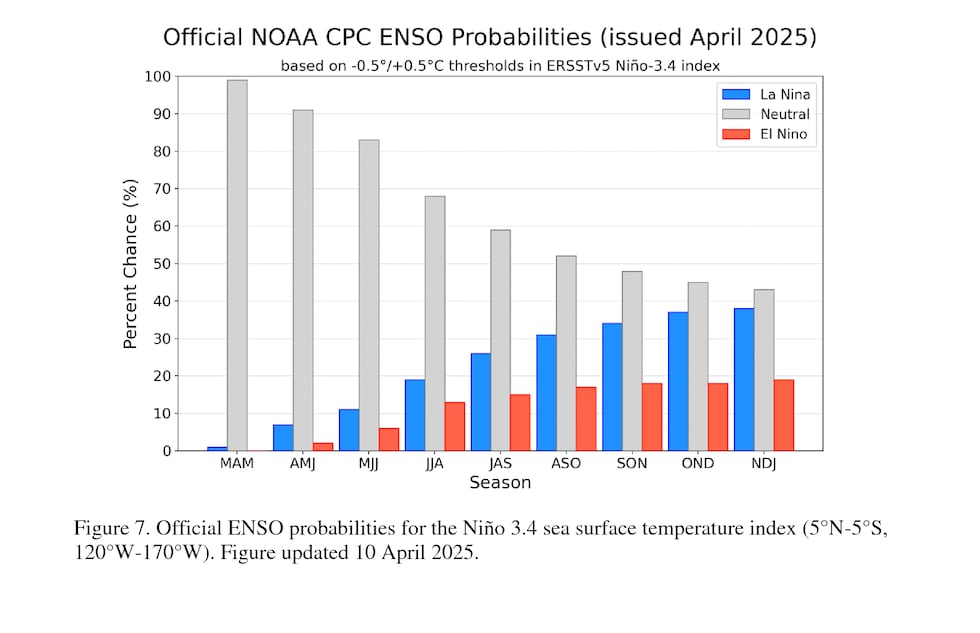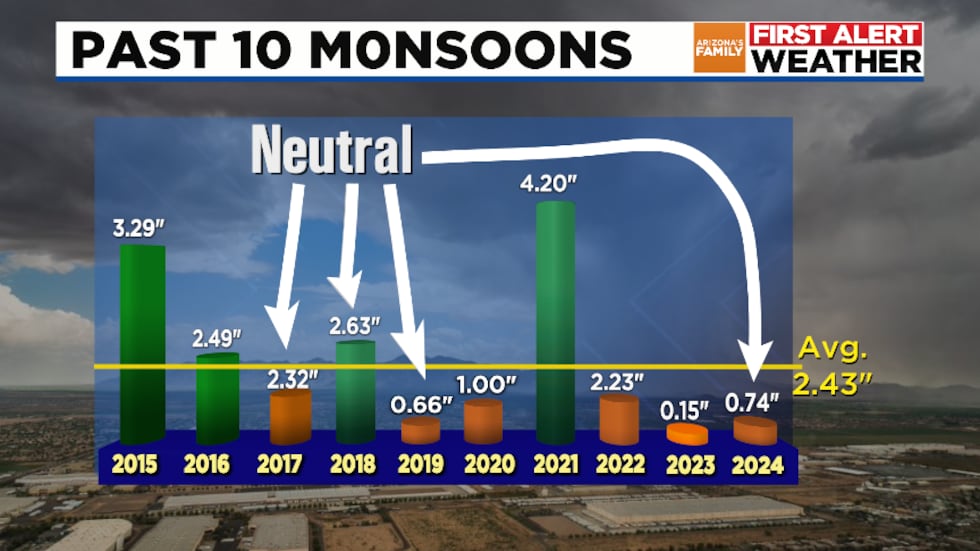La Niña is done, but what does that mean for Arizona monsoon season?
PHOENIX (AZFamily) — The Climate Prediction Center (CPC) officially declared the end of La Niña this week. This means that we are currently in a neutral state.
In other words, we are not in La Niña, and we are also not in El Niño. Based on this, can we read anything into the monsoon season?
Monsoon season is technically from June 15 to September 30. For the sake of this discussion, we will define it as July through September. In their forecast below, the CPC favors almost a 60% chance of neutral conditions persisting into July through September (shown as JAS in the graphic below).

Overall, there is not much of a link between the state of ENSO (El Niño, La Niña, or neutral conditions) and summertime rainfall in Arizona. ENSO has a stronger link to wintertime precipitation. However, it’s still interesting to look back at recent monsoon seasons to see what happened during the “neutral” monsoons.

Notice that there is no conclusive trend during the recent “neutral” monsoons. Two of the years, 2017 and 2018, were near normal, and two were well below normal. These below-normal neutral years include last year, which produced an unimpressive 0.74″ of precipitation in Phoenix.
While we can’t read much into the likely neutral conditions on the way for the monsoon, NOAA is leaning its forecast towards above-normal precipitation. This is probably not because of the neutral conditions but for other complex reasons involving the atmosphere.
One of those reasons is that the warm and dry land surface this spring may help boil up some heat, and this heat could help fuel precipitation later this summer. However, when it comes to long-term forecasts, nothing is set in stone, so check back for updates.
See a spelling or grammatical error in our story? Please click here to report it.
Do you have a photo or video of a breaking news story? Send it to us here with a brief description.
Copyright 2025 KTVK/KPHO. All rights reserved.




